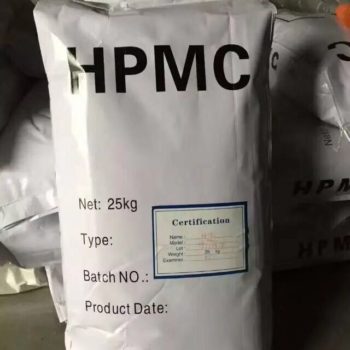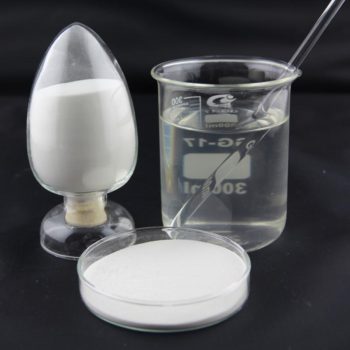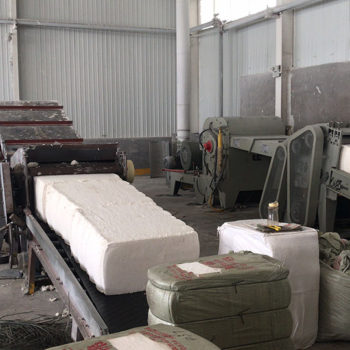Hydroxypropyl methylcellulose (HPMC) is a cellulose ether that has been widely used in various building material products. The versatility of HPMC lies in its ability to vary properties such as viscosity, water retention and dispersion, adhesion, bonding strength and film-forming ability.
Application of cellulose ethers in building materials products
- Cement mortar
In the construction industry, HPMC is widely used in cement mortars for different purposes such as reducing water consumption, extending setting time and improving mortar consistency. Adding HPMC to cement mortar enhances its bonding strength and can be easily applied to different surfaces without cracking.
- Tile adhesive
HPMC is a key ingredient in tile adhesives. It improves the bonding properties of the tile adhesive and enhances water retention, allowing the adhesive to stay sticky while the tiles are being placed. HPMC also improves the workability of the tile adhesive and provides better open time, which is important in ensuring the adhesive remains effective over the long term.
- Gypsum-based products
HPMC is used in gypsum plaster, caulks and other gypsum-based products. The addition of HPMC improves water retention and dispersion of gypsum-based products, resulting in reduced shrinkage, improved surface finish, and improved workability. HPMC also helps reduce cracking and improve the durability of gypsum-based products.
- Exterior Insulation and Finishing Systems (EIFS)
EIFS is popular in Europe and North America as an energy-saving solution for buildings. HPMC is an important component of EIFS as it enhances primer adhesion to the wall and provides a smooth surface finish. HPMC is compatible with different adhesives used in EIFS, such as acrylic, cement and vinyl.
- Self-leveling compounds
HPMC is often used in self-leveling compounds to provide consistency and improve flow properties. Its ability to disperse evenly in water allows for better mixing and dispersion of other additives such as cement, sand and aggregates. HPMC can also increase bond strength and reduce the viscosity of self-leveling compounds, resulting in a more consistent finished product. Self-leveling compounds are used to level uneven concrete floors before flooring materials are installed. Adding HPMC to these compounds improves their workability, leveling and water retention capabilities. HPMC can also enhance the surface appearance of these compounds by reducing surface bubbles and cracks
- Insulation materials
HPMC is used as an adhesive in insulation materials such as fiberglass and rock wool. It enhances adhesion, improves water resistance, and increases the tensile and flexural strength of the insulation. HPMC also ensures that the material retains its shape and provides excellent bonding properties to different substrates.
HPMC is a common ingredient in a variety of building material products. Its ability to modify different properties such as viscosity, water retention and dispersion, adhesion, bonding strength and film-forming capabilities makes it a valuable addition to different building materials. HPMC will continue to play an important role in the construction industry in the coming years due to its positive impact on the performance, durability and workability of building materials.
Application of HPMC in building materials:
- Mortar and plaster:
Mortars and plasters are cement-based mixtures used to bond, repair and cover walls and ceilings. Adding HPMC to these mixtures improves their workability, adhesion, and water retention capabilities. HPMC can also enhance the durability of these materials by reducing surface cracking and shrinkage.
- Cement-based waterproof coating:
Cement waterproofing coatings are used to protect concrete structures from water damage. The addition of HPMC to these coatings improves their durability, water resistance and crack resistance. HPMC also enhances the processability of these coatings by improving their flow and adhesion.
Beneficial properties of HPMC in building materials:
- Water retention:
HPMC has excellent water retention properties and improves the water retention capacity of building materials. This property is particularly useful in cement-based mixes where water retention is critical for ideal curing and bonding.
- Processability:
HPMC improves the processability of building materials by reducing viscosity and increasing flowability. This property is advantageous in applications such as mortars, plasters and self-leveling compounds, where the consistency of the material is critical for correct application.
- Adhesion:
HPMC improves the bonding properties of building materials by increasing the contact area between the building materials and the substrate. This property is helpful in applications such as tile adhesives where proper adhesion is critical to maintaining the longevity and stability of the installation.
- Durability:
HPMC increases the durability of building materials by making them more resistant to cracking, shrinkage and water damage. This property is advantageous in applications such as cementitious waterproof coatings, where resistance to water damage is critical to structural integrity.
Hydroxypropylmethylcellulose (HPMC) is a multifunctional polymer with a wide range of applications in the construction industry. It is widely used as a functional ingredient to enhance the performance of building materials. Its beneficial properties such as water retention, workability, adhesion and durability make it ideal for construction material applications such as mortars and plasters, tile adhesives, cementitious waterproof coatings and self-leveling compounds. The growing demand for environmentally friendly and sustainable building materials has made HPMC an important contributor to the development of building materials and the success of the construction industry.



